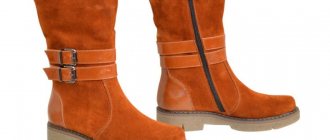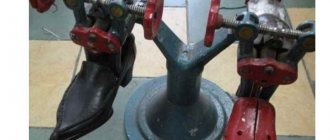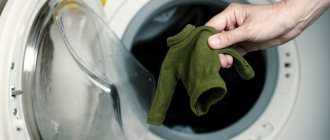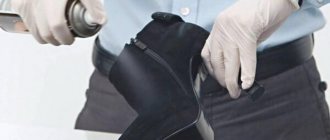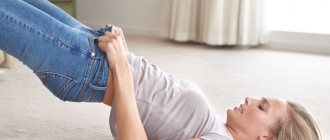- Posted by Lana Tolkunova
- Date: October 10, 2018
Let's start with the fact that shoes are vital for us. Thank God, gone are the days when one pair of boots per family was considered quite normal. In peasant families, of course. Wealthier citizens had shoes made to order to go with each new dress or suit. Tsarina Elizabeth Petrovna, for example, had more than a thousand shoes. Back then, shoes were made exactly to fit the foot, fit perfectly and did not cause any trouble to the owner.
However, a lot has changed since then. Ready-made shoe stores appeared with serial models and standard sizes. But there were no standard people, and there still aren’t. Therefore, now buying comfortable shoes that are beautiful and fit perfectly is not an easy task. You have to sacrifice something. Most often, convenience and comfort are placed on the altar of beauty and fashion. We buy “chic” shoes, even if they squeeze or rub, it’s okay, we’ll tolerate it, and if something happens, we’ll stick a band-aid on it. There is a lot of plaster in the country, but good shoes are worth their weight in gold.
In fact, almost any shoes, with rare exceptions, can be broken in. You just need to know the material from which they are made and how to stretch it. At the same time, the style, purpose, presence or absence of a heel does not in any way affect the choice of how to increase the size of the shoe.
The first thing you need to come to terms with is the fact that it is impossible to increase shoes indefinitely. The maximum that can be achieved without damage or deformation is to stretch it by one size. Keep this in mind when purchasing a new pair. New ones, because well-worn shoes shouldn’t be stretched. The material from which it is made has become rough and will be difficult to stretch, and the seams, on the contrary, are frayed and will easily tear at the first opportunity. If the shoes are slightly worn, it is quite possible to fight.
- 1.1 Freezer to help
1.1.1 Video about the method with a bag and ice
- 2 How to make tight faux leather models wider
- 3 Stretching textile shoes
- 4 Quick life hack - break in shoes in 5 minutes
4.1 Video about the express method of stretching shoes
How to make tight faux leather models wider
Leatherette shoes can be stretched, but with great care
To the question: “How to stretch leatherette shoes?” There can only be one answer: “Gently!”
Artificial leather, unlike natural leather, stretches reluctantly and tends to crack at any moment. To prevent this from happening, use gentle methods to increase the fullness of your shoes.
- Apply Vaseline to the inside of the shoes and leave for two to three hours. Then remove excess Vaseline with a cloth, put it on and wear for half an hour - an hour. If the desired effect is not achieved, repeat the procedure.
- Wet the newspaper (if paper newspapers are ever replaced by electronic ones, housewives will go on a sit-in strike, because half of the household chores will stop due to the lack of the main tool of labor - the old newspaper), and stuff them into a shoe or shoe so that it is completely filled, expanded , but not deformed. Be patient and wait until the newspapers dry, then remove them and throw them away.
Stuff your shoes tightly with damp newspapers
- Pour wheat grain or buckwheat directly into the shoe, add water and leave overnight. In the morning, clean the shoes from the swollen grain, put them on and wear them for an hour.
Powder powders
Before pouring or soaking your shoes with homemade solutions, try dry methods first. Use soda, citric acid or activated carbon, which you just need to sprinkle on the surface overnight. And in the morning, remove lumps and remaining powder with a vacuum cleaner or any unnecessary brush. By the way, even peroxide is sold in tablets - check it out!
Photo: novostiifakty.mediasole.ru
Stretching textile shoes
Fabric shoes can be stretched using damp paper
It's hard to believe, but sneakers and canvas shoes can also be too narrow and cause discomfort when walking. To ensure the comfort for which this type of shoe was created, it needs to be stretched.
This can be done using boiling water. Pour it inside the sneaker and pour it out immediately. Put the sneaker on your sock and walk around the house. Just before putting the kettle on the fire, check whether the fabric has faded from the hot water (you can stretch leather shoes in the same way).
If the fabric is at risk of fading, simply stuff torn white paper or newspaper inside, fill it with water and wait for it to dry. When this happens, throw away the paper, put your shoes on your feet and walk around the house for a couple of hours.
Reminder! When breaking in your shoes, try not to sit or stand, but to move, then your feet will not swell and the process will be less painful.
How to prevent odor
We figured out how to quickly get rid of the unpleasant smell of sweat in shoes at home, but how to prevent its occurrence? To prevent the lining from periodically starting to emit a stench, you need to properly care for it. Follow these guidelines:
- Air your shoes in the fresh air at least once a week.
- Give your boots a chance to rest; don't wear the same pair over and over again.
- Use insoles and remember to wash and change them regularly.
- When buying a new pair, pay attention to the quality; it should allow air to pass through well. Do not buy shoes made from unknown materials.
- If your feet get wet, dry your shoes immediately, otherwise the development of microorganisms will lead to an unpleasant odor or mold. When drying, stuff your shoes with paper to help absorb moisture.
- Regularly clean not only the outside, but also the inside of your shoes, using proven and effective products.
- Do not wear wet, recently treated shoes; residual moisture combined with perspiration creates a very strong odor.
- Before putting on your shoes, wash your feet, treat them with deodorant and put on clean socks (preferably cotton).
- Use shoe deodorant or purchase deodorizing cream.
- Do not wear tight shoes with narrow, uncomfortable lasts.
- Keep a spare pair of lightweight shoes at your workplace and don’t forget to change your shoes.
- Wash products made from textile materials regularly by hand or in a machine; this method helps to quickly remove dirt and odors.
- Choose shoes according to the weather; in hot weather, it is better to leave closed, tight shoes at home and wear sandals.
These simple tips will help you avoid problems with your favorite shoes and extend their life.
Quick life hack - break in shoes in 5 minutes
Stretch your shoes in 5 minutes
We put on thick socks and, armed with a hairdryer, for 30 seconds we heat the narrowest places, that is, those areas in which it feels tight. But that is not all. Simultaneously with heating, you need to stretch and arch your foot. We're done. We take off our socks, put shoes on our bare feet, and listen to our feelings. If the shoes are not catastrophically small, but just need to fit your feet, everything will work out.
Video about the express method of stretching shoes
Solutions and impregnations
To clean the internal surface and remove odors, weak solutions of peroxide, vinegar or ammonia are suitable. You can rub the inner surface with vodka or use strong green tea - a natural antiseptic. Apply solutions to a smooth surface with a well-wrung out sponge, and in other cases use a spray bottle.
Photo: moscow-oblast.sm-news.ru
Stretching rubber shoes
It is unlikely that it will be possible to stretch rubber shoes, but you can stretch PVC shoes
Question: “How to stretch rubber shoes?”
Answer: “No way.”
If it really is made of rubber.
But in our age of high technology, not all that glitters is gold, and not all is rubber that it seems. It is quite possible that it is PVC. In appearance it is no different, but in terms of properties - yes, as they say in Odessa. To establish the truth and reveal what the boots are made of, you need to cauterize them with a hot iron. Only very slightly and in an inconspicuous area. If the surface has melted, you have PVC, polyvinyl chloride, scientifically speaking. We will not delve into the chemical properties of this material; we will only say that it is subject to stretching.
We pour boiling water into the boot and wait until it cools down a little, that is, about 5 minutes. During this time, we manage to put on several pairs of socks and fill the basin with cold water. We pour the water out of the boot and immediately put it on the foot with several layers of socks, after which we place it in a basin with cold water. The PVC material softened by hot water will harden and retain its new shape.
Home flavors
To hide a slight unpleasant odor, just put a fabric bag with ground coffee in your shoes. You can use green tea bags or a bag of any other herbs - mint, lavender, at your discretion. If you use essential oils, be careful not to get them on the shoe itself and leave marks.
Photo: youtube.com
Controversial methods of removing shoes
There are ways to stretch shoes that need to be approached with caution.
There are several more descriptions of well-known but controversial methods of stretching shoes.
First, tapping with a hammer. The bottom line is that with the help of a hammer, hard problem areas, mainly backs, are broken. The method is common, but it is not suitable for expensive shoes made of delicate materials (suede, textiles, artificial leather), as it can simply ruin them. Soft skin should not be subjected to such a dangerous test either.
Secondly, breaking in boots soaked in soapy water. Experience shows that shoes do indeed wear out, but it is not always possible to get rid of the remaining soap stains, and it is not always possible to maintain their shape.
I take my shoes to a workshop for stretching if necessary. I used to wear them in with soap myself, but after such experiments the shoes lost their shape and my feet hurt later.
Irina 5
https://opyt-of-woman.com/poleznye-sovety/kak-raznosit-novyie-tufli-esli-oni-zhmut
Mixtures
If none of the simpler methods help, mix peroxide, green tea and salicylic acid in equal proportions. Wear gloves and wipe your shoes with a cotton pad in the solution on all sides, and then do not rinse. But keep in mind that this is an aggressive agent and it is better to first check somewhere in an inconspicuous place.
Photo: netgribka.ru
How to stretch shoes width and length by size?
It is quite possible to stretch your shoes wider. Length is a controversial issue, you can make them a little looser, but you won’t be able to stretch the shoes to size even with drastic methods.
One of the most popular ways to stretch your shoes is to walk around the house in shoes and thick (usually wool) socks. There will be no immediate results, but a week of walking around the apartment may be enough. In fact, the method is so-so, but you don’t need to “bother” - put on your socks and go ahead and drive around the expanses of your home.
Why do your shoes smell?
According to the San Diego Podiatric Medical Society, one pair of feet contains 250,000 sweat glands that produce up to 250 grams of sweat per day.
Of course, we sweat all over our bodies, but the smell is very different everywhere. Why? Unless you're a hobbit, your feet are covered most of the day in shoes, which "seal" the moisture released, which creates an ideal, warm, breeding ground for bacteria that eat your sweat and are the true cause of the stench.
When your feet can't breathe, bacteria multiply actively, ending up on your socks and feeling right at home in your favorite shoes. They release foul-smelling toxins that are absorbed by the shoes, causing them to smell even after they have been aired out.
This situation is the same for everyone, but why do some people calmly take off their sneakers after running and nothing happens, while others are afraid of it, knowing that the smell will be strong?
First, unfortunately, some people sweat more than others. Secondly, there are other factors (such as the breathability of the shoes or what kind of socks you wear) that can also matter. The good news is that no matter how pressing this problem is for you, it is not one of the unsolvable ones.
Below we have prepared step-by-step instructions for you on how to remove unpleasant odor from shoes.
